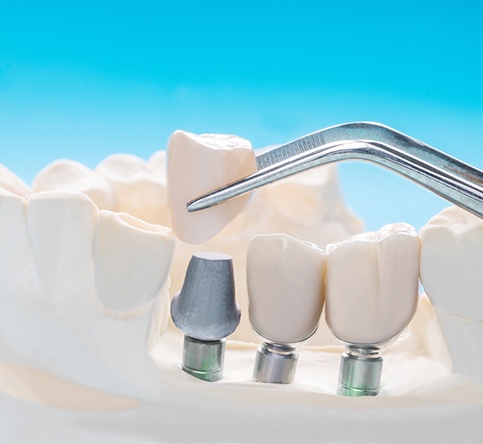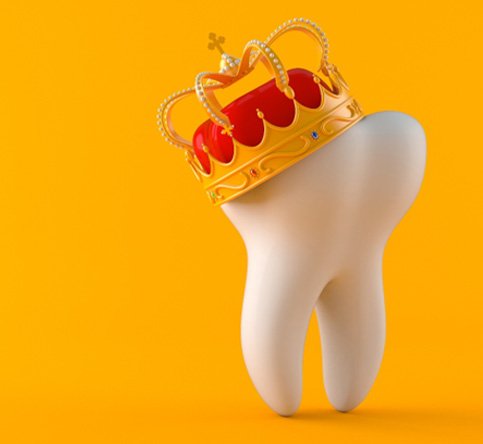Tampa, FL 33626
Office Hours
10:00am - 7:00pm
8:00am - 5:00pm
Sometimes a filling isn’t enough to save a tooth. If the enamel has been extensively damaged or decayed, or if the structure of the tooth has been severely weakened, it will often take a dental crown to restore the strength and stability that your tooth requires to function properly. Dr. Ponnaganti can design and place dental crowns in our Westchase, FL dental office in as little as two visits; read on to learn more about the process before you call to schedule a consultation.

Dental crowns can be placed for a variety of reasons. If we determine that you need one, we’ll begin the process by cleaning and reshaping the tooth in question. Small amounts of enamel typically have to be removed to make room for the crown. Afterwards, a mold or impression of the tooth is created and sent to a dental lab. We’ll call you back for another appointment once your permanent crown is ready; in the meantime, you’ll wear a temporary crown to protect your tooth.


Have you been told that you’re in need of a new dental crown? You may still have some unanswered questions about the procedure, so we’re here to help. Here are the answers to some of the most common questions we receive about dental crowns in Westchase. If you don’t see the information that you’ve been looking for below, don’t worry. Just give us a call and we’d be happy to explain more about the process so you know what you can expect.
Dental crowns aren’t permanent, but they are a long-term solution. On average, they can protect your tooth for anywhere from 5 to 15 years before needing to be replaced. When your dentist reshapes your tooth for a crown, that procedure is irreversible, as enamel cannot grow back once it’s been removed. The tooth will always need a crown for protection moving forward. That being said, crowns protect the underlying tooth from additional damage, therefore helping the tooth to survive for much longer than it likely would have otherwise. You can keep your crown in great shape by committing to daily oral hygiene, regular checkups, and wearing a mouthguard.
It is impossible for a crown itself to develop cavities, but the tooth underneath it still can. In fact, a crowned tooth has about the same risk of decay as an uncrowned tooth. Poor oral hygiene makes it possible for bacteria and plaque to form around the gumline whether the tooth meets the crown. They can then travel underneath the crown and wreak havoc on the underlying tooth. You can prevent cavities in crowned teeth the same way you’d prevent cavities in any other tooth. Brush, floss, and see your dentist for regular checkups.
Just like when you get a filling, your mouth will be numbed with a local anesthetic before the procedure begins. The procedure shouldn’t hurt, but you may experience some soreness for a few days afterward, especially if you also hot a root canal. This can usually be managed with over-the-counter pain relievers. If discomfort worsens, give us a call so we can help.
Within a few days of receiving your permanent crown, it should start to feel increasingly natural. Crowns are made from durable materials that can stand up to everyday chewing forces just as easily as tooth enamel, so eating with a crown shouldn’t feel strange. The reason your dentist reshaped your tooth was to ensure the crown would fit comfortably within your mouth. Additionally, every crown is customized based on impressions taken of the tooth. Therefore, your crown shouldn’t feel awkward or even noticeable.
I Need a Dental Checkup & Cleaning I Need a Dentist for My Child I am Concerned About Bleeding Gums I Have a Cavity or Broken Tooth I am Missing One or More Teeth I am Unhappy with My Smile I Want a Straighter Smile I am Scared of the Dentist I am in Pain & Need Help I Need My Wisdom Teeth Removed View Our Services
Office Hours
10:00am - 7:00pm
8:00am - 5:00pm
Office Hours
8:00am - 5:00pm
8:00am - 5:00pm
8:00am - 5:00pm